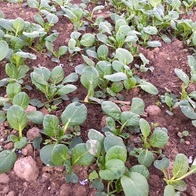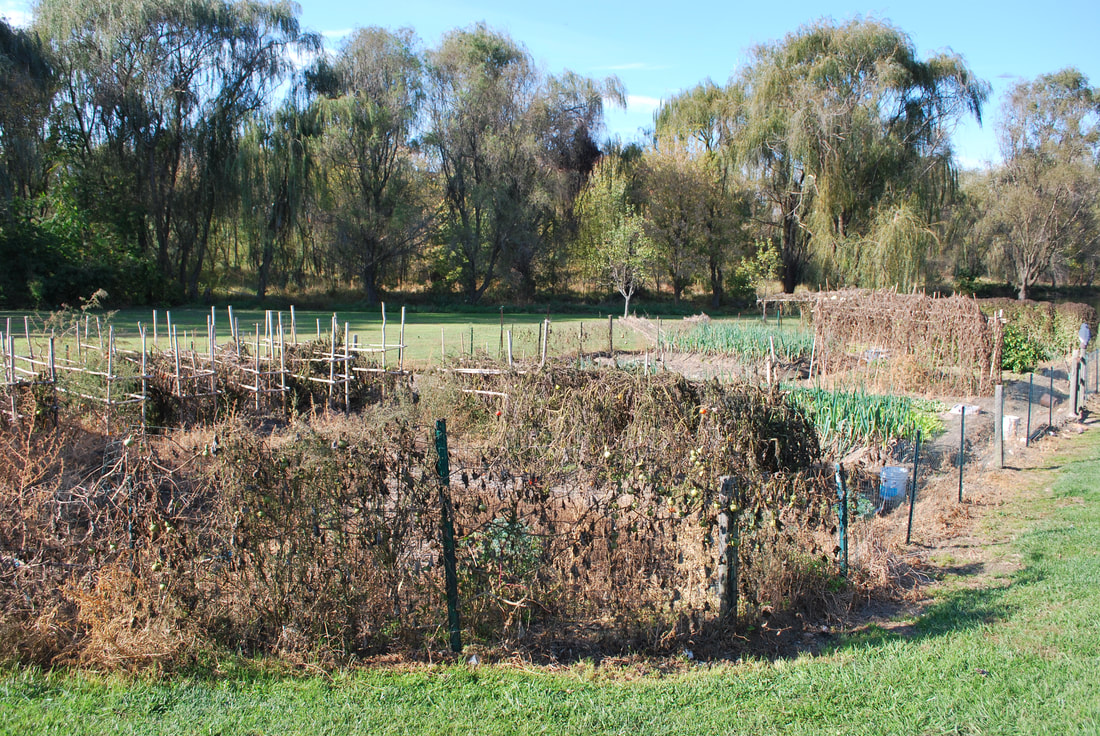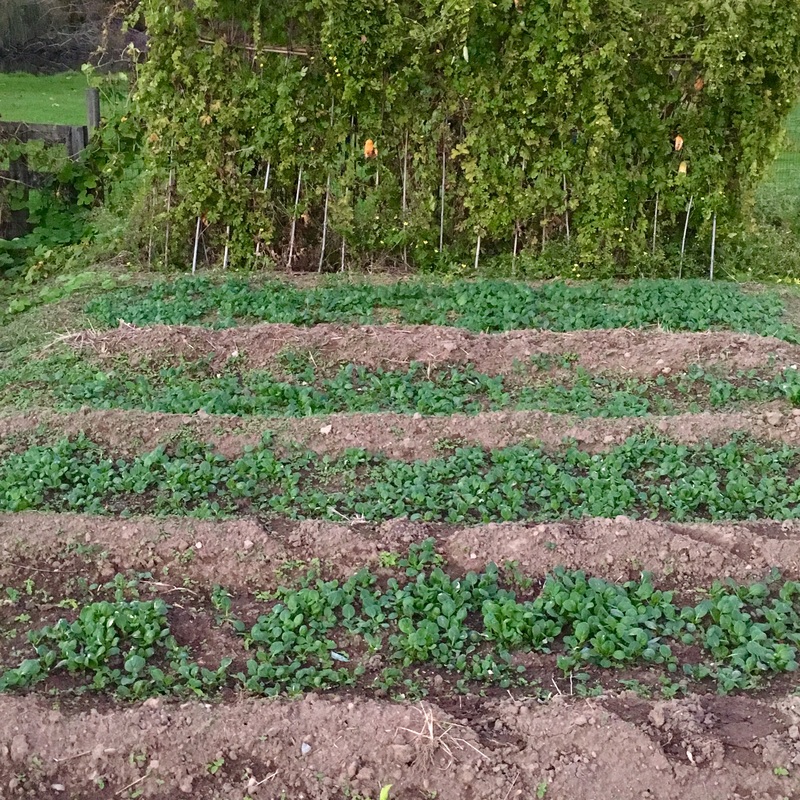|
A couple weeks ago, I had the pleasure of speaking at a panel discussion at the Museum of Chinese America in New York. There is a excellent exhibit going on called Sour, Sweet, Bitter, Spicy, and if you've found your way to this blog, I know you will love the exhibit. It runs through September 10th so your time is limited. I highly recommend a visit!
Anyhow, at the discussion, I was asked about fall gardening. What do gardeners need to know about it??? Well, take a look at the photo above, which was probably taken...October maybe? Tomatoes and other fruiting vegetables are dead and brown. But see the greenery? The tall dark green plants are a giant bunching onion called "da tsung". The shorter green plants, and the chartreuse greens behind them are the gems of fall - Asian greens such as tatsoi and A choy. What gardeners need to know about fall planting is that it needs to be well thought out and planned in advance. Fall gardens don't just happen. Most of the time, in the heat of the summer, fall-planting gardeners are going through seed packets, anticipating where there will be space in the garden, and figuring out when and how to start each type of vegetable seed. My biggest challenge, personally? Germinating seeds and keeping them from drying out. A good solution for my situation is starting my fall leafy greens indoors. This way I can keep an eye on them and water them regularly without worrying that a late high 90 degrees day will kill them. This also lets me keep plants like beans for shelling or gourds for drying, on the vine in the garden as long as possible. With a little preparation, it's easy to have a fantastic garden far into the fall. Lots of Chinese vegetables actually taste better after they're hit with a frost. Tatsoi, like carrots, become sweeter as the weather cools. Get a copy of The Chinese Kitchen Garden now and learn about all the leafy greens that are at their best in just a couple of months!
4 Comments
 Tatsoi is one of my father's favorite leafy greens. This vegetable is also called flat cabbage because while the leaves in the photo to the left still have an upright appearance, after a good frost, the leaves will flatten. It's particularly good this time of year, when, just like carrots, cabbage, Brussels sprouts, and other cold-weather vegetables, the leaves actually sweeten. In fact, my father thinks they're the best after being hit with a few light frosts. This sturdy vegetable can take the cold and actually thrives this time of year when other leafy greens turn to mush. |
AuthorI'm Wendy Kiang-Spray, gardener, home cook, and author of The Chinese Kitchen Garden. Learn more about the book here. Enjoy the blog and be sure to like The Chinese Kitchen Garden Facebook page for notifications when there are new posts. Archives
April 2019
Categories
All
|


 RSS Feed
RSS Feed